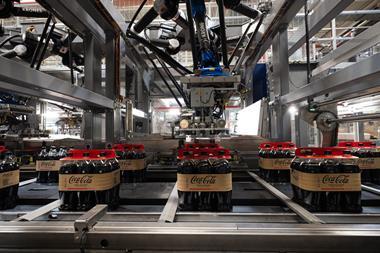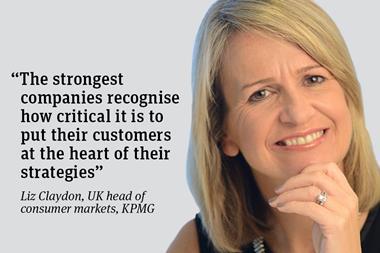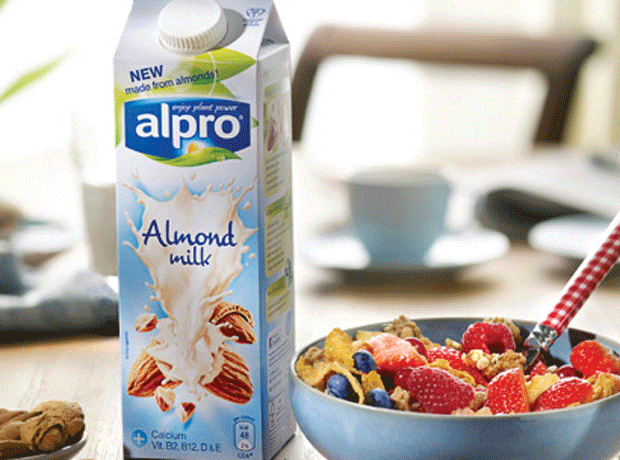Availability is at the heart of Asda's vision for dairy. "We are generally 8-10% cheaper in dairy than our competitors," says Penny Coates, business unit director, chilled and prepared foods, at Asda. "We must make sure that there is as efficient supply chain as possible so we deliver at the right price and product is always available. We struggled wtih this 18 months ago but it has improved.
"We are seeing double digit growth but the challenge is how to sustain and build on this. Suppliers have been slow in some ways in recognising the changing market but they are gradually becoming more prepared to meet consumer needs."
At Asda's yearly agricultural conference dairy farmers were showed clips of real customers giving their views. "I think they believed this more than what we tell them."
Coates believes the way to ensure sustainable growth is to find ways to innovate and to interest kids. "We have seen good initiatives, with different flavours, textures and sizes, as well as handheld snacking and kids' products.
"There is also a move towards health and wellbeing, while the amount of dairy going into ready meals will contribute to growth."
Asda is seeing growth in continental cheese well ahead of other cheeses, says Coates. "We want to grow this as fast as we can but must get the offer right for the local market. There is a lot of opportunity for growth out there but it is about the optimal choice for the local area. We are adopting regional profiles better than in the past."
Another challenge is to make merchandising as easy as possible in store. "In milk we have the roll-in trays and these are easy to do. We will potentially extend this into other areas." Asda also finds shelf-ready packaging beneficial. It is looking at case sizes in order to improve availability and merchandising, and examining ways to create merchandising hotspots, such as seasonal products.
"We have looked at space in store and lowered the height of chillers while increasing capacity by 15-20%. We are relatively underspaced in chilled but this will increase in the next three to four years."
At Sainsbury, Jon Arnold, trading manager, dairy, is taking a close look at areas where the multiple undertrades slightly. "We do not have the share of trade in milk penetration that we do in grocery. A lot of our customers have doorstep delivery so a key objective is to convert them."
Sainsbury is also driving a shift to added value in milk. "We have own label organic milk, have introduced Rachel's Organic Dairy, and are uniquely testing White and Wild, with 3p from every sale split between the World Wildlife Fund and farmers.
"And in the local store format milk is a key driver. This is a key opportunity."
But it is cheese that is "exceptionally important" to Sainsbury, says Arnold. " The continental and premium end aligns with our customer profile, but the big change for Sainsbury is to grow volume share in the family side, such as Cheestrings and Dairylea Lunchables. This brings in the next generation of customers."
He adds: "Regionality is seen as a key driver within dairy. "We have many West Country cheeses in the south west as well as local ranges in Northern Ireland, for example."
Sainsbury uses models based on continental consumption patterns to help plan for the future. "I do not expect to see a cheese breakfast in the vast majority of households next year, but it was only 10 years ago that no one ate yogurt for breakfast over here.
"And just look at Smoothies," says Arnold. "This is now a huge sub category and growing exceptionally fast but did not exist five years ago.
"Emerging markets excite us. Fresh desserts have tremendous potential but we have yet to see the really big brands get behind them."
{{Z SUPPLEMENTS }}
"We are seeing double digit growth but the challenge is how to sustain and build on this. Suppliers have been slow in some ways in recognising the changing market but they are gradually becoming more prepared to meet consumer needs."
At Asda's yearly agricultural conference dairy farmers were showed clips of real customers giving their views. "I think they believed this more than what we tell them."
Coates believes the way to ensure sustainable growth is to find ways to innovate and to interest kids. "We have seen good initiatives, with different flavours, textures and sizes, as well as handheld snacking and kids' products.
"There is also a move towards health and wellbeing, while the amount of dairy going into ready meals will contribute to growth."
Asda is seeing growth in continental cheese well ahead of other cheeses, says Coates. "We want to grow this as fast as we can but must get the offer right for the local market. There is a lot of opportunity for growth out there but it is about the optimal choice for the local area. We are adopting regional profiles better than in the past."
Another challenge is to make merchandising as easy as possible in store. "In milk we have the roll-in trays and these are easy to do. We will potentially extend this into other areas." Asda also finds shelf-ready packaging beneficial. It is looking at case sizes in order to improve availability and merchandising, and examining ways to create merchandising hotspots, such as seasonal products.
"We have looked at space in store and lowered the height of chillers while increasing capacity by 15-20%. We are relatively underspaced in chilled but this will increase in the next three to four years."
At Sainsbury, Jon Arnold, trading manager, dairy, is taking a close look at areas where the multiple undertrades slightly. "We do not have the share of trade in milk penetration that we do in grocery. A lot of our customers have doorstep delivery so a key objective is to convert them."
Sainsbury is also driving a shift to added value in milk. "We have own label organic milk, have introduced Rachel's Organic Dairy, and are uniquely testing White and Wild, with 3p from every sale split between the World Wildlife Fund and farmers.
"And in the local store format milk is a key driver. This is a key opportunity."
But it is cheese that is "exceptionally important" to Sainsbury, says Arnold. " The continental and premium end aligns with our customer profile, but the big change for Sainsbury is to grow volume share in the family side, such as Cheestrings and Dairylea Lunchables. This brings in the next generation of customers."
He adds: "Regionality is seen as a key driver within dairy. "We have many West Country cheeses in the south west as well as local ranges in Northern Ireland, for example."
Sainsbury uses models based on continental consumption patterns to help plan for the future. "I do not expect to see a cheese breakfast in the vast majority of households next year, but it was only 10 years ago that no one ate yogurt for breakfast over here.
"And just look at Smoothies," says Arnold. "This is now a huge sub category and growing exceptionally fast but did not exist five years ago.
"Emerging markets excite us. Fresh desserts have tremendous potential but we have yet to see the really big brands get behind them."
{{Z SUPPLEMENTS }}











No comments yet